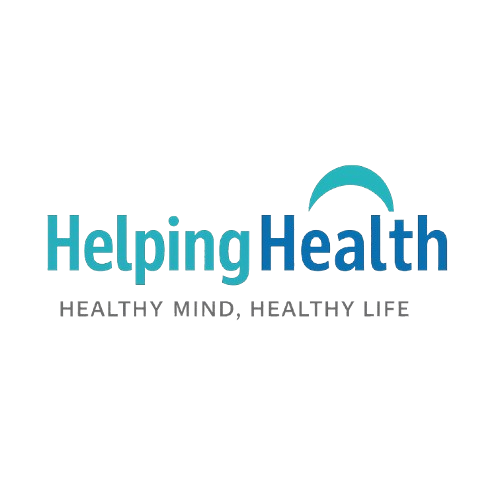
Children’s Health: Common Diseases, Prevention, and Healthy Living
Learn about common children’s diseases, prevention tips, and how to build strong immunity. Helping Health provides expert insights on keeping kids healthy, safe, and active.
Introduction
Children are the foundation of a healthy future. But with weaker immunity compared to adults, they are more vulnerable to infections and diseases. According to the World Health Organization (WHO), childhood illnesses remain one of the leading causes of school absenteeism an
d long-term health issues.
At Helping Health, we believe that parents, caregivers, and educators must stay informed about children’s health to ensure a healthy start to life. In this article, we’ll explore the most common diseases among children, their symptoms, treatment, and most importantly, preventive measures for a healthier future.
Why Children’s Health is a Priority
-
Children’s immune systems are still developing, making them prone to infections.
-
Early childhood illnesses, if untreated, can affect growth and development.
-
Prevention and early care reduce healthcare costs and long-term complications.
-
A healthy child is more active, focused, and performs better in school.
Common Diseases in Children
1. Respiratory Infections
Examples: Common cold, influenza, bronchitis, pneumonia.
-
Symptoms: Cough, fever, sore throat, runny nose, difficulty breathing.
-
Causes: Viruses or bacteria spread through air, droplets, or contact.
-
Prevention: Handwashing, vaccinations (flu shots, pneumococcal vaccines), wearing masks during outbreaks.
2. Diarrhea and Gastrointestinal Infections
-
Symptoms: Loose stools, vomiting, dehydration, abdominal pain.
-
Causes: Contaminated food, unsafe water, poor hygiene.
-
Prevention: Proper hand hygiene, clean drinking water, breastfeeding in infants, avoiding street food.
-
Tip: Oral rehydration solution (ORS) is essential to prevent dehydration.
3. Asthma and Allergies
-
Symptoms: Wheezing, breathlessness, chest tightness, persistent cough.
-
Causes: Dust, pollen, smoke, pet dander, environmental pollution.
-
Prevention: Keep homes dust-free, avoid smoking around kids, regular check-ups.
-
Note: Asthma is not curable, but it is manageable with proper medical care.
4. Malnutrition
-
Symptoms: Stunted growth, weakness, frequent infections, learning difficulties.
-
Causes: Poor diet, lack of essential vitamins and minerals.
-
Prevention: Balanced diet including fruits, vegetables, protein, milk, and micronutrients (iron, calcium, zinc).
5. Skin Conditions
Examples: Eczema, rashes, fungal infections, chickenpox.
-
Symptoms: Itching, redness, blisters, spots.
-
Causes: Allergies, poor hygiene, viruses.
-
Prevention: Regular bathing, use of mild soaps, clean clothes, vaccinations (for chickenpox and measles).
6. Childhood Obesity
-
Symptoms: Rapid weight gain, low energy, social anxiety, diabetes risk.
-
Causes: Junk food, lack of exercise, screen addiction.
-
Prevention: Encourage outdoor play, limit screen time, healthy meals, family fitness activities.
7. Infectious Diseases
Examples: Measles, mumps, rubella, polio, whooping cough.
-
Symptoms: Fever, rashes, cough, body pain (varies by disease).
-
Causes: Viral or bacterial infections, spread through contact or droplets.
-
Prevention: Vaccination is the most effective protection. Parents should follow the recommended immunization schedule.
Prevention Tips for Parents
-
Vaccination is Key
-
Ensure your child receives all mandatory vaccines on time.
-
Booster shots are equally important.
-
-
Good Hygiene Habits
-
Teach handwashing before meals and after using the toilet.
-
Encourage brushing teeth twice daily.
-
-
Balanced Diet
-
Include fruits, vegetables, whole grains, protein, and dairy.
-
Reduce processed foods, sugary drinks, and fast food.
-
-
Adequate Sleep
-
Preschool children: 10–12 hours daily.
-
School-age children: 9–11 hours daily.
-
Teenagers: 8–10 hours daily.
-
-
Physical Activity
-
Minimum 60 minutes of daily activity for children.
-
Encourage cycling, swimming, sports, or even dancing.
-
-
Mental Health Support
-
Stress, anxiety, and bullying affect children’s health.
-
Encourage open communication and spend quality time.
-
Role of Parents & Schools
-
Parents: First line of defense for a child’s health—provide proper nutrition, ensure vaccines, promote hygiene, and give emotional support.
-
Schools: Must ensure clean drinking water, proper sanitation, and regular health check-ups. Health education should be a part of the curriculum.
When to See a Doctor
Parents should seek medical advice immediately if children show:
-
High fever (above 102°F or 39°C)
-
Severe breathing difficulties
-
Dehydration (dry lips, no urine for 6 hours)
-
Persistent vomiting or diarrhea
-
Sudden rashes with fever
-
Unusual tiredness or weakness
The Importance of Early Diagnosis
-
Early detection of chronic conditions like diabetes, asthma, anemia, or heart defects ensures better management.
-
Regular health check-ups every 6–12 months are crucial.
-
Growth charts help track development milestones.
Future of Children’s Health
With modern medical advancements, vaccination programs, and health awareness campaigns, child mortality rates have reduced globally. But lifestyle-related issues such as obesity, stress, and screen addiction are on the rise.
Helping Health focuses on guiding parents, caregivers, and schools toward a holistic approach to children’s health—covering nutrition, exercise, mental wellness, and disease prevention.
Conclusion
Children are our future, and their health is our responsibility. By focusing on prevention, healthy routines, vaccinations, and early medical care, parents can protect their children from most common diseases.
At Helping Health, we encourage parents to stay proactive—because a healthy child today means a healthier tomorrow.
